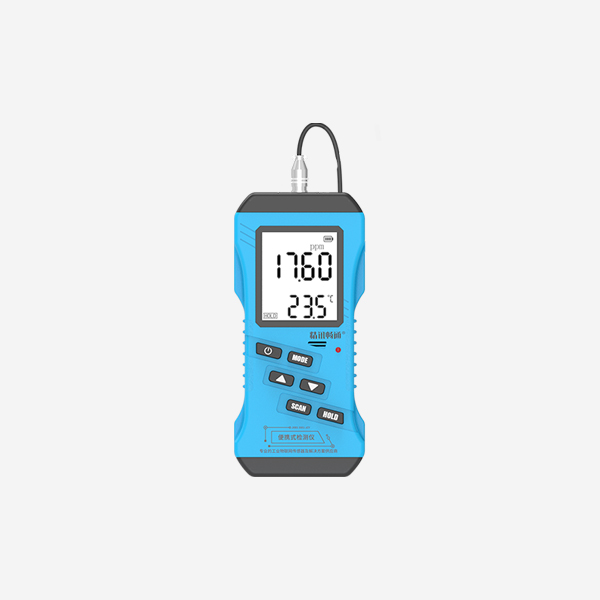Precision agriculture, also known as smart farming or precision farming, is an innovative approach that utilizes technology to optimize agricultural practices. One of the key technologies driving this revolution is soil sensor technology. Soil sensors enable farmers to monitor and analyze soil conditions in real-time, leading to more efficient use of resources, increased crop yields, and reduced environmental impact. This article explores the significant role of soil sensor technology in precision agriculture, highlighting its benefits and potential for transforming farming practices.

Understanding Precision Agriculture:
Precision agriculture involves the application of advanced technologies, such as satellite imagery, drones, GPS, and soil sensors, to collect and analyze data about various aspects of farming. By gathering detailed information about soil, weather patterns, crop growth, and nutrient needs, farmers can make informed decisions and precisely tailor their farming practices to optimize yields while minimizing costs and environmental impact. Soil sensor technology plays a crucial role in providing accurate and real-time data on soil conditions, enabling farmers to make data-driven decisions.
The Role of Soil Sensors in Precision Agriculture:
a. Soil Composition and Nutrient Management: Soil sensors measure key soil parameters such as pH levels, nutrient concentrations, and organic matter content. This data helps farmers understand the nutrient status of their soils and make informed decisions about fertilizer application. By applying fertilizers precisely where and when they are needed, farmers can minimize waste, reduce pollution from nutrient runoff, and improve overall nutrient management.
b. Soil Moisture Monitoring:
Soil sensors provide real-time information on soil moisture levels at different depths. This data enables farmers to optimize irrigation practices, ensuring that crops receive the right amount of water at the right time. By avoiding under- or over-irrigation, farmers can prevent water stress in plants, save water resources, and enhance crop productivity.
c. Crop Disease and Pest Management:
Soil sensors can detect changes in soil conditions that may indicate the presence of pests or diseases. By monitoring soil moisture, temperature, and other parameters, farmers can identify potential issues early on and take appropriate preventive measures. This proactive approach reduces the reliance on chemical pesticides and promotes sustainable pest management practices.
d. Soil Erosion and Conservation:
Soil sensors help farmers monitor soil compaction and erosion risks. By understanding soil moisture levels and soil structure, farmers can implement soil conservation strategies such as cover cropping, contour plowing, and terracing. These measures minimize erosion, preserve soil health, and protect valuable topsoil.
Benefits of Soil Sensor Technology in Precision Agriculture:
a. Increased Crop Yields: By optimizing irrigation, nutrient application, and pest management based on real-time soil data, farmers can maximize crop yields. Precision agriculture enables farmers to address specific crop needs, resulting in healthier plants and better overall productivity.
b. Resource Efficiency:
Soil sensor technology allows farmers to use resources more efficiently. With precise data on soil conditions, farmers can avoid over-application of fertilizers and reduce water waste through targeted irrigation. This not only saves costs but also minimizes environmental impacts associated with excessive resource use.
c. Environmental Sustainability:
Precision agriculture, driven by soil sensors, promotes sustainable farming practices. By minimizing nutrient runoff, reducing pesticide usage, and preventing soil erosion, this approach helps protect water sources, maintain soil health, and preserve biodiversity.
d. Cost Savings:
Precision agriculture offers potential cost savings by optimizing resource use and minimizing waste. By applying inputs only where necessary, farmers can reduce expenses on fertilizers, water, and pesticides. Additionally, early detection and prevention of crop diseases and pests can prevent yield losses and save money on remedial measures.
Challenges and Future Directions:
While soil sensor technology has immense potential, several challenges need to be addressed for widespread adoption and further advancements: a. Cost: The initial investment in soil sensors and related technologies can be a barrier for some farmers, particularly those with smaller operations. However, as technology continues to advance and costs decrease, soil sensors are becoming more accessible to a broader range of farmers.
b. Data Interpretation:
Collecting vast amounts of data through soil sensors is one thing, but effectively analyzing and interpreting that data is another challenge. Farmers need user-friendly interfaces and data analysis tools to make sense of the information collected and translate it into actionable insights.

c. Standardization:
With various soil sensor manufacturers and different data formats, standardization is crucial for seamless integration and compatibility among different systems. Common protocols and standards would facilitate data sharing and collaboration among farmers, researchers, and agricultural organizations.
d. Education and Adoption:
Widespread adoption of precision agriculture requires education and training for farmers to understand the principles and benefits of this approach. Governments, agricultural institutions, and technology providers should collaborate to provide training programs and support to farmers transitioning to precision agriculture.
In the future
advancements in soil sensor technology will likely focus on improving accuracy, durability, and energy efficiency. Integration with other technologies, such as artificial intelligence and machine learning, can enhance data analysis capabilities and further optimize farming practices.
Conclusion:
Soil sensor technology has revolutionized precision agriculture, enabling farmers to make informed decisions based on real-time soil data. By monitoring soil composition, moisture levels, and other key parameters, farmers can optimize resource use, reduce environmental impact, and maximize crop yields. While challenges exist, continued advancements in soil sensor technology and increased awareness of precision agriculture’s benefits will drive its widespread adoption. With precision agriculture powered by soil sensor technology, farming practices can become more efficient, sustainable, and productive, contributing to global food security and environmental conservation.
